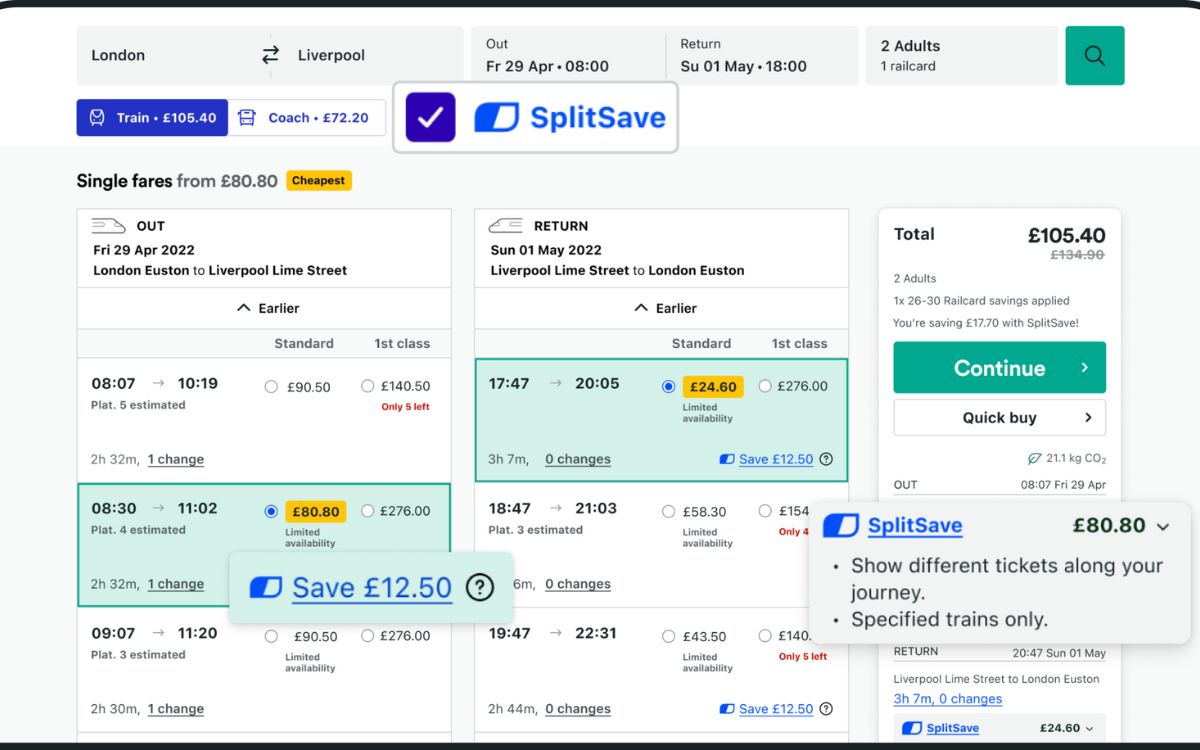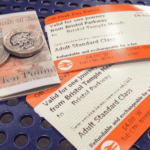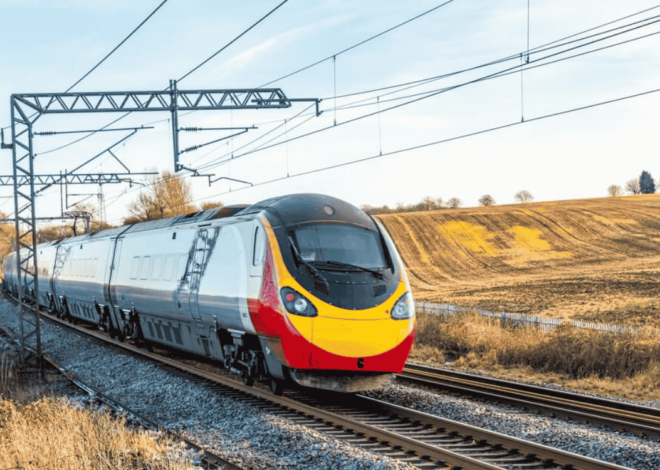
Why More Travelers Are Turning to Split Ticketing for Train Journeys
Train travel across the UK has long been cherished for its scenic routes and accessibility. However, for many travelers, the expense of train tickets can be a significant drawback. In recent years, a rising number of savvy commuters, tourists, and business travelers are opting for split ticketing to reduce their expenses. This strategy, which involves purchasing multiple tickets for different segments of a journey instead of one continuous ticket, can offer remarkable savings while maintaining convenience and flexibility.
Understanding Split Ticketing:
At its core, split ticketing is a ticketing method that allows passengers to “split” a single journey into smaller segments and buy tickets for each section individually. For example, instead of purchasing a single ticket from London to Edinburgh, a traveler might buy tickets from London to York and then York to Edinburgh. This approach may sound complex, but it’s entirely legal and has become increasingly popular due to the significant savings it can yield.
Rail fares in the UK are calculated on a route-by-route basis, and prices can vary drastically depending on factors such as demand, time of booking, and travel times. By using split train tickets, passengers can often sidestep higher fares on direct routes and access cheaper prices on individual legs of their journey.
Why Split Ticketing is Gaining Popularity:
The allure of split ticketing lies in its potential to drastically reduce travel costs, sometimes by up to 50% or more. As train fares continue to rise in many parts of the UK, travelers are actively seeking ways to minimize expenses without sacrificing comfort or flexibility. Here are some of the main reasons why more travelers are embracing this strategy:
Cost-Effectiveness:
For the budget-conscious traveler, splitmyfare offers an effective way to control travel expenses. While traditional ticketing often forces passengers to pay a premium for direct routes, split ticketing provides a more economical alternative. For instance, a long journey that costs £100 on a single ticket may be broken into three segments, each priced at £25 or £30, resulting in considerable savings. This option is especially appealing to frequent commuters, students, and families who wish to make the most of their travel budgets.
Greater Flexibility:
With split train tickets, passengers gain added flexibility, as splitting tickets allows for stops at intermediate stations. If a traveler wants to take a break or explore a particular town along the route, split tickets make it possible without the extra cost that would typically come with changing travel plans. This flexibility has made split ticketing a popular choice for those who enjoy spontaneity in their travel itineraries.
Accessible and User-Friendly:
Thanks to options like splitmyfare, travelers can easily find and purchase split tickets without the hassle of navigating complex booking systems. These platforms simplify the process, automatically calculating the best segments to split the journey for maximum savings. Gone are the days when split ticketing required intricate planning and research—today’s online tools make it accessible to even the least tech-savvy travelers.
Legitimacy and Transparency:
A common misconception is that split ticketing is somehow “cheating the system.” However, purchasing split tickets is entirely legal within the UK’s rail network, as long as the train stops at the stations where tickets are split. For travelers who might feel wary about employing such tactics, it’s reassuring to know that split my ticket is a legitimate method widely recognized and endorsed by major rail networks. This transparency has helped split ticketing gain acceptance among a broader range of passengers.
Environmental Benefits:
Opting for split train tickets can also lead to a more environmentally friendly way of traveling. By encouraging people to take trains rather than drive, this ticketing approach promotes the use of public transportation, which has a lower carbon footprint compared to cars. Furthermore, the cost savings associated with split ticketing make train travel a more viable alternative for many, which may help reduce road congestion and emissions in the long term.
How Split Ticketing Works:
To make the most of split ticketing, travelers need to know which stations along their route provide the most significant savings. Generally, this involves identifying points where ticket prices are lower and purchasing separate tickets for each segment. However, thanks to technology, split ticketing no longer requires travelers to calculate these segments manually.
Numerous online platforms and mobile apps, including splitmyfare, have streamlined the process. These services analyze train schedules and prices to recommend the most cost-effective ticket splits, sometimes even automating the purchase of each segment. This convenience has made split ticketing more accessible than ever before, attracting travelers who might not have considered it otherwise.
Pros and Cons of Split Ticketing:
While split ticketing offers clear benefits, it’s essential to understand both the advantages and potential drawbacks before adopting this approach.
Pros:
Cost Savings: As previously mentioned, split ticketing can significantly reduce travel expenses, especially on long-distance routes.
Increased Flexibility: With split tickets, travelers can pause at intermediate stations without incurring extra costs.
Enhanced Accessibility: Platforms like splitmyfare make split ticketing easy for everyone, eliminating the need for manual calculations.
Cons:
Complexity for Some Routes: For certain journeys, the potential savings from split ticketing may be limited, and the process could be more complex.
Ticket Validity Requirements: Split ticketing is only valid if the train stops at each station where tickets are split. Travelers must ensure they’re on trains that meet this condition.
Availability of Split Tickets: Not all routes will yield significant savings with split ticketing, especially on shorter or less popular routes where fare prices are already relatively low.
Common Misunderstandings About Split Ticketing:
One of the main barriers preventing some travelers from embracing split ticketing is a lack of understanding about how it works. A prevalent misconception is that split ticketing is against railway regulations, or that passengers must switch trains at each station. In reality, split my ticket is perfectly legitimate and doesn’t require passengers to leave the train unless they wish to. As long as the train stops at each station listed on the individual tickets, passengers can remain onboard for the entire journey.
Another misunderstanding is that split ticketing is too complex or time-consuming to set up. However, with the growth of online services dedicated to split ticketing, such as splitmyfare, even travelers unfamiliar with rail travel can easily access split ticket options with minimal effort.
How to Start Using Split Ticketing:
For those who are interested in taking advantage of split ticketing, getting started is easier than ever. Most of the prominent rail booking platforms now include split ticketing features, and dedicated sites like splitmyfare specialize in finding and optimizing split ticket options for any journey.
To start using split ticketing, travelers simply need to enter their departure and destination points into a split ticketing platform. The platform then automatically calculates the most cost-effective ticket combinations, presenting the traveler with an optimized ticketing plan. Many of these platforms also allow for mobile ticketing, enabling travelers to download their tickets directly to their devices for added convenience.
Conclusion:
As train fares continue to climb, split ticketing has emerged as a preferred solution for cost-conscious travelers. Whether it’s through the ease of using services like splitmyfare or the flexibility of choosing individual journey segments, split ticketing offers a practical approach to affordable travel. With its ability to unlock substantial savings, enhance travel flexibility, and support environmental goals, it’s no surprise that more people are turning to split ticketing for their train journeys.
For anyone looking to explore the UK by train without breaking the bank, split ticketing represents a valuable tool that can make rail travel both economical and enjoyable.








